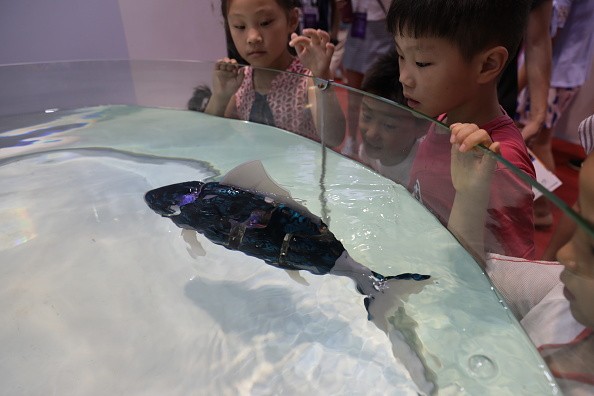Could robotic fishes solve our problem with plastic pollution in the oceans?
According to a group of Chinese researchers from Sichuan University in southwest China, robot fish that sucks up microplastics could one day help in cleaning up the world's plastic-polluted oceans.

Microplastic-Eating Robo-Fish
The fish are smooth to touch and only measure 1.3 centimeters or 0.5 inches in length, yet they can already ingest microplastics in shallow water, according to Reuter's report.
Wang Yuyan, one of the scientists who designed the robot, told Reuters that the team wants to give them the ability to gather microplastics in deeper water and deliver data to assess marine pollution in real-time.
According to Yuyan, his team has created a lightweight, miniature robot. She claimed that it could be utilized in a variety of settings, including biomedical or risky operations. One example he cited is a small robot that can be localized to a specific area of your body to assist in the treatment of any kind of sickness.
The dark-colored robot fish is exposed to light, which stimulates the robot to move its body and fins. In order to prevent the fish from striking other fish or ships, scientists can regulate it using its light.
Since it is constructed of polyurethane, which is also biocompatible, Wang claimed that if another fish accidentally consumed it, it would be harmlessly digested.
Reuter's report further noted that even if the fish is injured, it can still take in toxins and heal. It can swim faster than most artificial soft robots at a rate of up to 2.76 body lengths per second.
The robot has the ability to collect adjacent microplastics while swimming is particularly impressive. According to The Guardian, the materials used to make the robot engage with the heavy metals, medicines, and dyes that are linked to microplastics.
Nature served as some of the inspiration for the robot's materials, according to BBC Science Focus Magazine. Researchers specifically drew inspiration from mother-of-pearl, the substance covering clam shells' interior.
Read also : 'Microplastics in Meat': Lab Test Shows Microplastic Contamination in Pork, Beef, Milk, and Feed
Robot Fish For Invasive Fish Species
The Sichuan team is not the first scientists to create a robot fish to solve eco-related problems. In fact, in December 2021, a robo-fish was designed to scare invasive fish species from particular ecosystems.
The fish, a brainchild of scientists from New York University and the University of Western Australia, was created to combat a mosquitofish pest. It is made to move and appear like the largemouth bass, a mosquitofish's deadliest adversary.
Every time the robot fish goes to feed on tadpoles, it employs a technology known as "computer vision" to recognize mosquitofish. The robot ultimately scares the little predators away with the way it moves and appears.
This article is owned by Tech Times
Written by Joaquin Victor Tacla
ⓒ 2025 TECHTIMES.com All rights reserved. Do not reproduce without permission.




